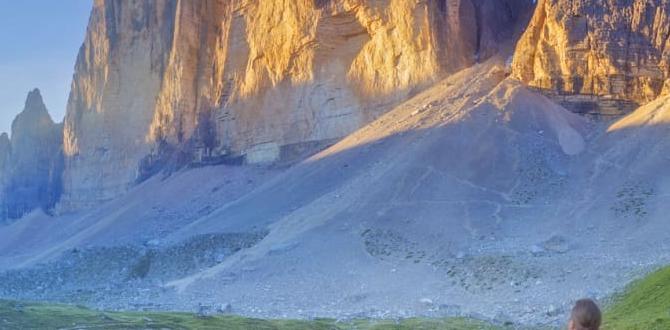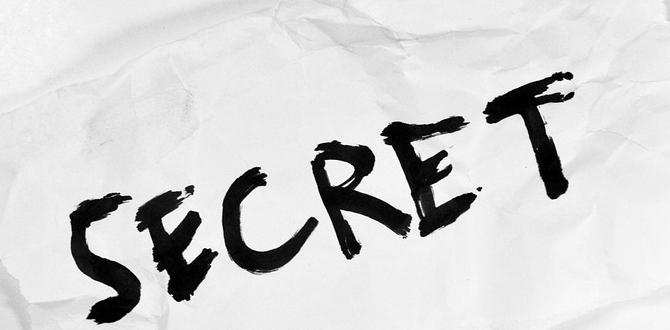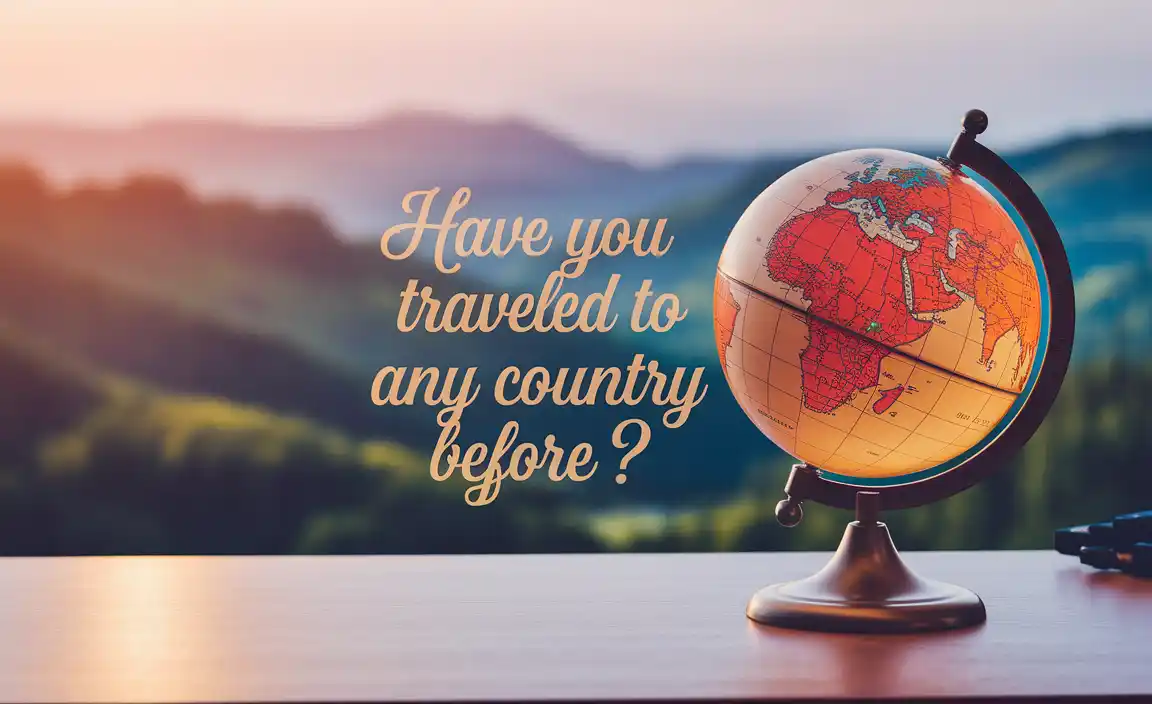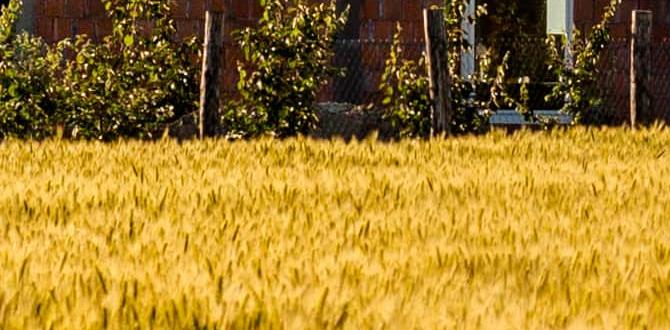Bohol, the best time to visit is during the dry season, typically from December to May, for sunny skies and calmer seas perfect for island hopping and beach activities. To avoid crowds, aim for the shoulder months of December or May.
Planning a trip to Bohol? This gem in the Philippines offers incredible natural wonders and vibrant culture. Figuring out the perfect time to go can make all the difference for a smooth and enjoyable escape. You want sunshine, calm waters for those famous island tours, and perhaps a few less people to truly soak it all in. Don’t worry, we’ll guide you through it. Let’s find your effortless Bohol adventure!
Understanding Bohol’s Climate for Your Perfect Visit
Bohol, like much of the Philippines, has a tropical climate characterized by two main seasons: the dry season and the wet season. Understanding these patterns is key to planning the “Bohol best time to visit” without the fuss. We want you to experience the island’s magic without being caught in unexpected downpours or rough seas, especially if you’re keen on snorkeling, diving, or simply lounging on its stunning beaches.
The Dry Season: Sunshine and Calm Seas
The dry season generally runs from December to May. This period is widely considered the most ideal time to visit Bohol for a few compelling reasons.
December to February: This is often hailed as the peak of the dry season. Expect consistently sunny days with very little rainfall and pleasant, moderate temperatures. The humidity is also generally lower during these months, making outdoor activities more comfortable. This is perfect for exploring the Chocolate Hills, visiting the Philippine Tarsiers, and enjoying the numerous beaches. The seas are usually calm, making island hopping tours to Panglao, Balicasag, and Virgin Island a delight.
March to May: These months continue the dry spell, but often bring higher temperatures and humidity. It’s still an excellent time for water activities and exploring, but you might want to plan your excursions for the cooler parts of the day. This period is fantastic for diving and snorkeling due to excellent visibility in the clear waters.
This is the time when most tourists flock to Bohol, so if you’re looking for the “Bohol best time to visit without crowds,” you might need to strategize.
The Wet Season: Lush Landscapes and Fewer Tourists
The wet season typically spans from June to November. While this period sees more rainfall, it’s not a constant downpour, and there are distinct advantages to visiting during these months.
June to November: Expect rain showers, which can range from short, intense bursts to longer, more persistent drizzles. Typhoons can occur, especially between August and October, which may lead to travel disruptions. However, the rain also brings out the lush, vibrant greenery of Bohol, making the landscapes incredibly scenic. The upside is significantly fewer tourists, offering a more serene and authentic experience. You’ll find better deals on accommodation and tours.
Rainfall Patterns: It’s important to note that even during the wet season, there are often sunny periods. Many travelers find they can still enjoy their activities, with rain often occurring in the afternoon or evening. Flexibility is key if you travel during this time.
The wet season can be a fantastic option if you are looking for the “Bohol best time to visit without crowds” and don’t mind a little rain. You might even find that the rain enhances the spiritual feel of the island.
Navigating Crowds: Your Strategy for a Serene Bohol Escape
If your primary concern is finding the “Bohol best time to visit without crowds,” here’s how to approach it. While the dry season is popular, there are ways to minimize contact with large groups.
Shoulder Seasons: The Sweet Spot
The ideal compromise for great weather and fewer crowds lies in the shoulder months.
December (Early): Visiting in early December, just before the Christmas rush, can offer a fantastic combination of good weather and relatively fewer tourists compared to late December and January. The festive spirit might already be in the air, adding to the charm.
May (Late): As the dry season winds down and the initial part of the wet season begins, May can be a great month. You’ll likely still get plenty of sunshine, but the peak season crowds will have dispersed.
These periods are excellent for experiencing the best of Bohol without the intense bustle.
Traveling During the Wet Season for Solitude
As mentioned, the wet season (June to November) naturally brings fewer tourists. If you are aiming for ultimate solitude and a more “local” feel, this is your window.
Embrace the Green: The island is incredibly lush and beautiful during this time.
Budget-Friendly: You’ll often find better prices on flights and accommodations.
Flexibility is Key: Always check weather forecasts and be prepared to adjust your itinerary if a typhoon or heavy rain impacts your plans. Traveling with essential items like comfortable, quick-drying clothing and reliable rain gear can make a big difference. For parents, this also means packing smart for children, ensuring comfort for unexpected weather changes, perhaps with easily packable raincoats or ponchos. For adults who might need discretion and comfort, knowing how to pack discreetly for personal needs, such as adult diapers for longer travel days or unexpected delays, adds a layer of stress-free travel.
Key Considerations for Different Traveler Types
Your travel style will also influence the best time for you to visit Bohol. Here’s a breakdown for different groups:
For Families with Young Children
When traveling with little ones, comfort and predictable weather are usually top priorities.
Best Time: December to February offers the most stable weather, with less intense heat and minimal rain, making it easier to manage outdoor activities and maintain children’s routines. The calm seas are also a huge plus for boat trips.
Packing Essentials: Alongside other travel gear, consider packing child-friendly essentials. This could include lightweight, breathable clothing, sun hats, child-specific sunscreen, and any comfort items your child needs. For extended travel days or potential delays, ensuring you have child diapers readily available can save a lot of stress. Having a comfortable, secure diaper bag with changing supplies is also a must.
For Dive Enthusiasts and Snorkelers
The underwater world of Bohol is a major draw, and visibility is crucial.
Best Time: The dry season, particularly from March to May, offers excellent underwater visibility. While the entire dry season provides great conditions, these warmer months often boasts the clearest waters. Balicasag Island, known for its marine sanctuaries, is particularly spectacular during this time.
Water Clarity: The reduced rainfall means less sediment run-off into the sea, leading to crystal-clear waters perfect for appreciating the vibrant coral reefs and diverse marine life.
For Budget Travelers
If you’re looking to get the most bang for your buck, timing can significantly impact costs.
Best Time: The wet season (June to November) is your best bet for cheaper flights and accommodation. You can find significant discounts during this period.
Strategic Planning: Even during the dry season, visiting on weekdays rather than weekends, and booking accommodations and tours in advance can help save money. Traveling in the shoulder months (early December or May) can also offer a good balance of decent weather and slightly lower prices than the absolute peak.
For Photography Lovers
Capturing Bohol’s stunning scenery requires good light and clear skies.
Best Time: The dry season (December to May) offers the most reliable sunny days for breathtaking photos of the Chocolate Hills, beaches, and waterfalls. The golden hours of sunrise and sunset are particularly magical.
Wet Season Charms: Don’t discount the wet season entirely! The lush, post-rain landscapes can be incredibly dramatic and photogenic. Rainbows are more common, adding a unique element to your shots.
Bohol’s Annual Events and Festivals
While not a primary factor for determining the “Bohol best time to visit,” local festivals can add a splash of color to your trip. Be aware that during major festivals, accommodations can be booked up, and prices might increase.
Sandugo Festival (July): This is Bohol’s most famous festival, commemorating the blood compact between Datu Sikatuna and Miguel López de Legazpi. It features parades, street dancing, and cultural presentations. Expect more crowds and vibrant energy.
Tagbilaran City Fiesta (May 1): A religious and cultural celebration in the capital city.
Feast of St. Joseph the Worker (May 1): Celebrated in many towns across Bohol.
Christmas and New Year (December/January): Bohol, like the rest of the Philippines, celebrates these holidays with great enthusiasm. Expect decorations, family gatherings, and a festive atmosphere. This is also peak tourist season.
Comparing Bohol’s Seasons at a Glance
To help you visualize, here’s a table summarizing both seasons:
| Season | Months | Typical Weather | Crowd Levels | Pros | Cons |
|---|---|---|---|---|---|
| Dry Season | December – May | Sunny, hot, low humidity (peak), moderate humidity (late dry) | High (December-February) to Moderate (March-May) | Ideal for beach activities, island hopping, diving, clear waters, comfortable for touring. | Higher prices, more tourists, can be very hot and humid (especially April-May). |
| Wet Season | June – November | Rain showers (frequent but often short), high humidity, possibility of typhoons. | Low | Fewer crowds, lower prices, lush green scenery, more authentic local feel. | Risk of travel delays due to weather, some activities might be affected, water visibility can be reduced. |
Planning Your Bohol Itinerary: Packing for Comfort and Confidence
Regardless of when you decide to visit Bohol, smart packing is crucial for an effortless escape. As Michael C. Herrera of Journey Essentials, I always emphasize preparedness for real-life travel needs.
Essential Packing List for Bohol
Lightweight, Quick-Drying Clothing: Think cotton t-shirts, shorts, and sundresses. For cooler evenings or air-conditioned transport, a light jacket or shawl is useful.
Swimwear: Essential for Bohol’s beautiful beaches and marine activities.
Sun Protection: High SPF sunscreen, wide-brimmed hats, sunglasses, and rash guards for water sports. The tropical sun can be intense.
Comfortable Footwear: Sandals or flip-flops for the beach, comfortable walking shoes for exploring. Water shoes can be great for rocky shorelines or kayaking.
Insect Repellent: Especially important for evenings and for visits to inland attractions like the Chocolate Hills or tarsier sanctuaries.
Rain Gear (if traveling during the wet season): A compact umbrella or a lightweight, packable rain jacket.
Travel Adapter: The Philippines uses Type A, B, and C outlets, with a standard voltage of 220V.
Reusable Water Bottle: Stay hydrated and reduce plastic waste.
Power Bank: Handy for keeping your devices charged on the go, especially if you’re out for long days exploring.
Addressing Specific Needs with Confidence
Travel should be comfortable for everyone. For those who require them, planning for personal care items is vital for stress-free journeys.
Adult Diapers for Comfort and Security: Long travel days, island hopping tours, or unexpected delays can be much smoother when you feel secure. Choosing breathable, highly absorbent adult diapers can provide confidence and comfort. Look for options designed for discreet wear under clothing. Brands that offer good leakage protection and skin-friendliness are ideal for the tropical climate. Many are designed for active lifestyles, ensuring freedom of movement for exploring.
Child Diapers for Little Travelers: For families, ensuring your children are comfortable is paramount. Packing an ample supply of child diapers, choosing breathable and soft materials, can prevent nappy rash and discomfort, especially in warm weather. Having easy-to-use travel packs for quick changes on the go is a lifesaver. Always ensure you have a designated area or bag for used diapers for hygiene.
Essential Accessories for an Effortless Trip
Waterproof Dry Bag: Protect your electronics and valuables during boat trips or if you encounter unexpected rain.
Camera or Smartphone with Good Camera: To capture Bohol’s breathtaking beauty.
Basic First-Aid Kit: Including pain relievers, antiseptic wipes, bandages, and any personal medications.
Travel Documents: Passport, flight details, hotel bookings, and any necessary IDs. Keep digital copies as well.
Traveling Responsibly
When you visit Bohol, remember to be a responsible tourist. Respect local customs, conserve water, minimize waste, and support local businesses. Learn more about sustainable tourism practices from organizations like the Department of Tourism (Philippines).
Conclusion
Bohol is a destination that truly shines with careful planning. By understanding the nuances of its tropical climate and considering your personal travel preferences, you can pinpoint the “Bohol best time to visit” that ensures an effortless and memorable escape. Whether you’re dreaming of soaking up the sun on pristine beaches, exploring lush inland wonders, or diving into its vibrant underwater world, the key is to align your visit with the weather that suits your activities and your desire for peace and quiet.
Remember, the dry season from December to May generally offers the most reliable sunshine for a classic island holiday experience. For those seeking the “Bohol best time to visit without crowds,” the shoulder months of December and May, or embracing the unique beauty and tranquility of the wet season (June to November), present fantastic opportunities.
Ultimately, the journey to Bohol is as much about preparation as it is about the destination. With comfortable packing, a strategic approach to timing, and an open heart for adventure, your Bohol escape will be an experience tailored perfectly for you, filled with sunshine, smiles, and the magic of this delightful Philippine island. Happy travels!
Frequently Asked Questions
Q1: When is the absolute best time to visit Bohol for perfect beach weather?
The months of December to February offer the most consistent sunshine and the calmest seas, making them ideal for beach activities and island hopping.
Q2: What if I want to visit Bohol but avoid the peak tourist crowds?
Consider visiting during the shoulder months of late November, early December, or May. The wet season (June to November) also guarantees fewer crowds, though you should be prepared for rain.
Q3: Is it safe to travel to Bohol during the wet season?
Generally, yes. While there’s a higher chance of rain and potential typhoons (especially August-October), most of the time, it’s just occasional showers. Always check weather advisories, particularly if you plan on extensive sea travel. Many visitors have wonderful trips during this time.
Q4: What are the temperatures like in Bohol throughout the year?
Bohol has a tropical climate with average temperatures ranging from 25°C to 32°C (77°F to 90°F) year-round. The dry season can feel hotter due to lower humidity, while the wet season often feels more humid.
Q5: Are there specific months I should avoid for visiting Bohol?
While not strictly “avoid,” if you dislike rain and want guaranteed sunshine, try to avoid the peak of the wet season around August to October, as this is when typhoons are more frequent. However, if avoiding crowds is your priority, these are excellent months.
Q6: How does the weather affect island hopping tours in Bohol?
Calm seas during the dry season (December to May) make island hopping very smooth and enjoyable. During the wet season, tours can be postponed or canceled due to rough weather for safety reasons. It’s always wise to check with your tour operator.
Q7: Can I find good deals on accommodations and flights at any time of the year?
Yes, you can find the best deals during the low season, which is generally the wet season (June to November). Traveling during the shoulder months (like May or early December) can also offer slightly better prices than the absolute peak tourist periods.







